

Prosperity Through All-Round Development1
All-round development is essential to moderate prosperity. In pursuing moderate prosperity, China emphasizes balanced, coordinated and sustainable progress in the economic, political, cultural, social, and eco-environmental fields. It aims to meet people's growing needs in all areas and at all levels and to promote their well-rounded development. Moderate prosperity makes China a strong and prosperous country striving for national rejuvenation and people's wellbeing.
1. Sustained and Healthy Economic Growth
A sound economy underpins moderate prosperity in all respects. China's economic power, scientific and technological capabilities, and its composite national strength have significantly increased.
Economic strength has increased significantly. China's GDP soared from RMB67.9 billion in 1952 to RMB101.6 trillion in 2020. As the world's second largest economy, it accounts for over 17 percent of the global total (Chart 1). With per capita GDP rising from less than US$100 in 1952 to over US$10,000 in 2020, China has achieved a historic transformation from a low-income country to an upper-middle-income country (Chart 2). For years it has ranked first in the world in terms of added value in the manufacturing sector and output of over 220 major industrial products. It has also been the world's largest manufacturing country for the past 11 years.
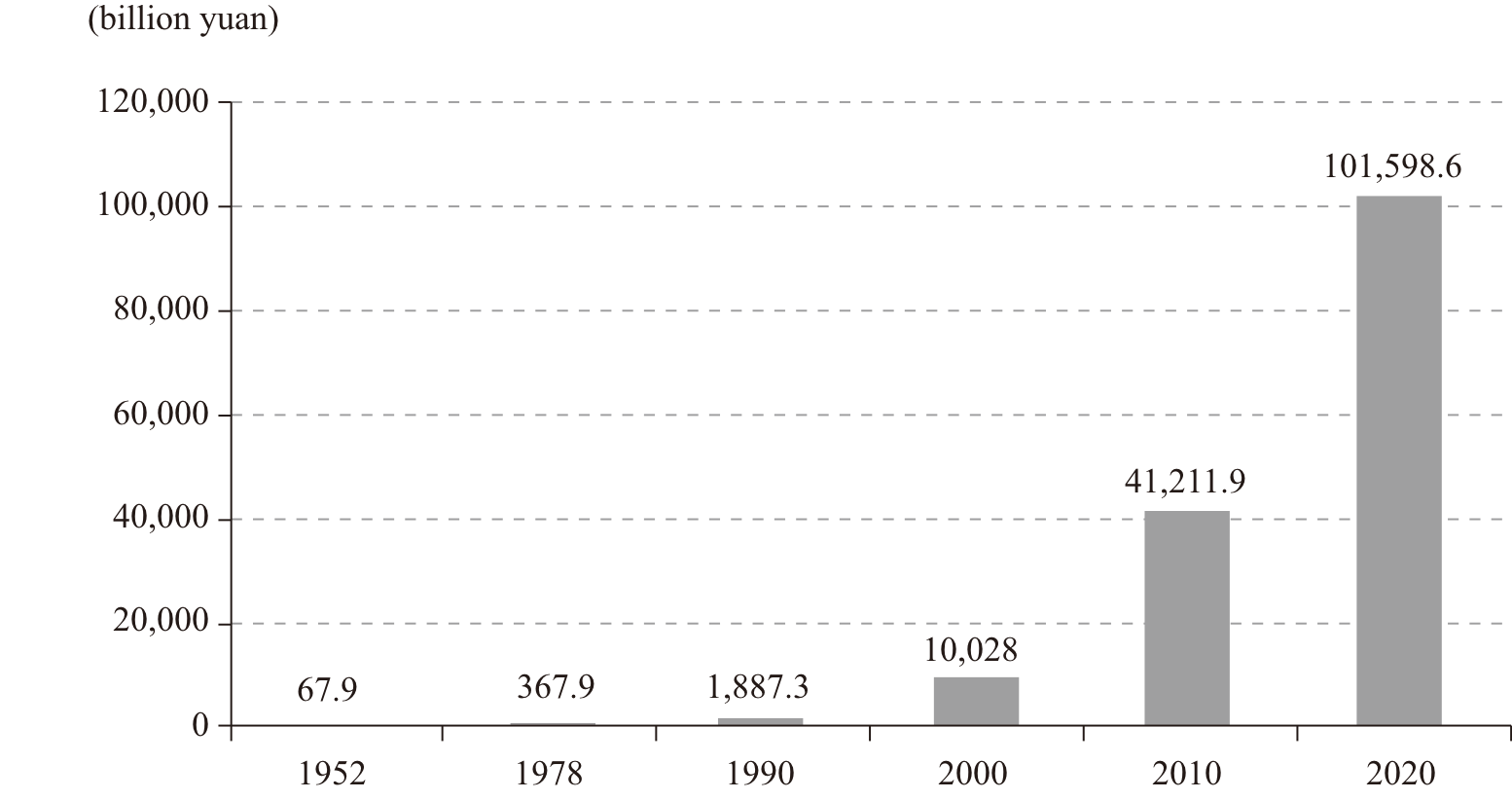
Chart 1 China's GDP (1952-2020)
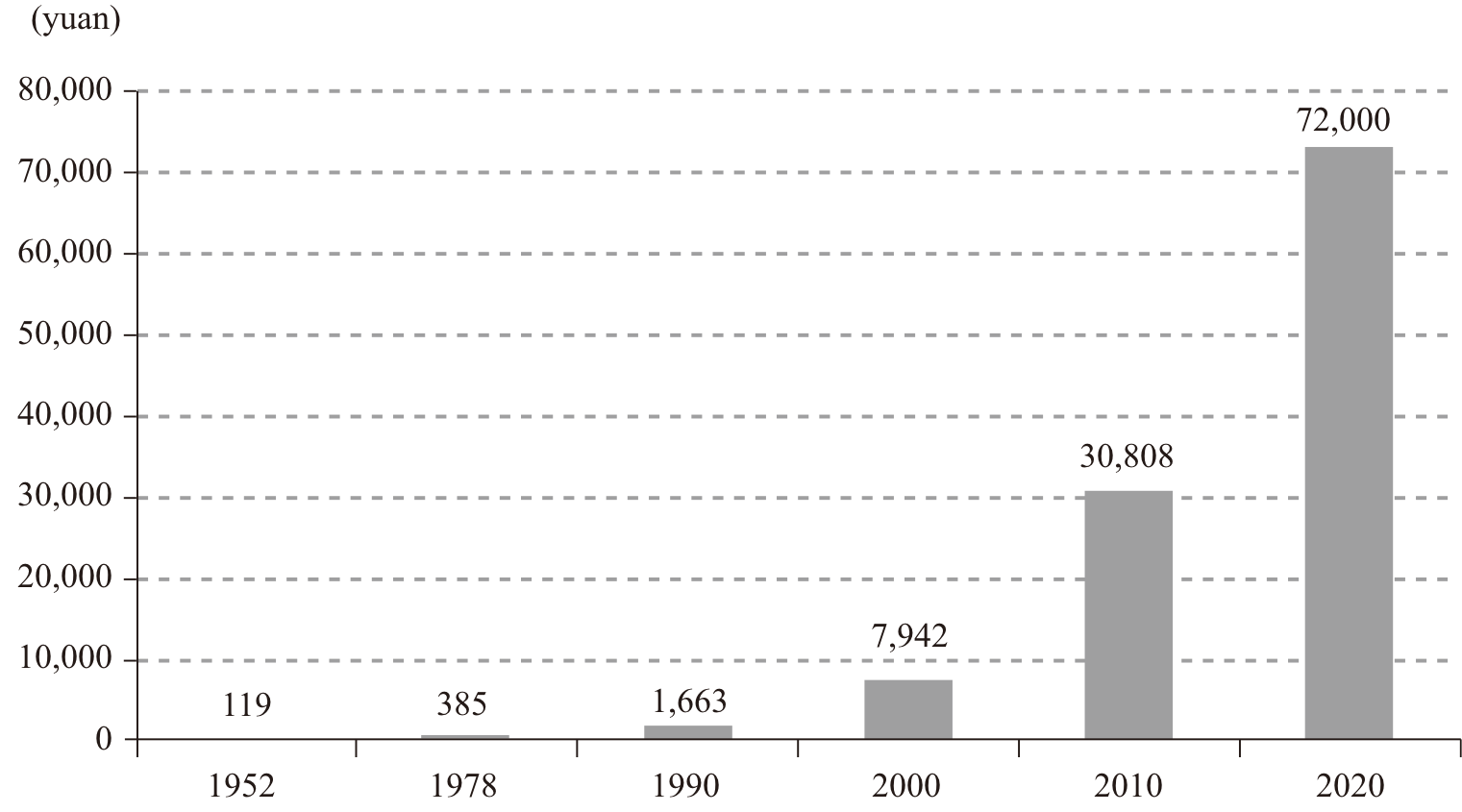
Chart 2 China's per capita GDP (1952-2020)
Exponential advances have been made in science and technology. The dream of moderate prosperity has been realized with the support of science and technology.
Major breakthroughs have been made in a large number of strategic high technologies, including manned space flight and lunar exploration, the BeiDou Navigation Satellite System, manned deep-sea submersibles, high-speed railways, 5G mobile communications, and supercomputing. China is now a leader in innovation, building greater strengths in science and technology (Panel 1).
Panel 1 Technological Advances and Strategic Innovations
More R&D spending
In 2020, China spent RMB2.4 trillion on R&D, ranking second in the world. Its R&D intensity (ratio of R&D to GDP)reached 2.4 percent. A total of 1,345,000 utility patent applications were filed with domestic agencies and 441,000 were granted. In addition, 69,000 international patent applications were submitted through the Patent Cooperation Treaty. China ranked 14th on the Global Innovation Index in 2020 and was the only middle-income economy in the top 30 on this list.
More innovation centers
By the end of 2020, China had established 533 key national labs, 350 national engineering research centers (also known as national engineering labs), 1,636 national enterprise technology centers, 212 mass entrepreneurship and innovation bases, 1,287 national technology enterprise incubators, and 2,251 makerspaces approved by the Ministry of Science and Technology.
The central government is supporting efforts to build Beijing, Shanghai and the Guangdong-Hong Kong-Macao Greater Bay Area into international centers for science and technology innovation, and is developing comprehensive national science centers in Huairou of Beijing, Zhangjiang of Shanghai, the Greater Bay Area, and Hefei of Anhui Province.
Major breakthroughs in basic research and strategic high technology
The quantum communication satellite Mozi, the Hard X-ray Modulation Telescope satellite Insight, the dark matter probe satellite Wukong, and the Tianwen-1 Mars probe were successfully launched. The moon probe mission landed Chang'e-4 on the far side of the moon - the first probe ever to do so.
The industrial structure has been continuously upgraded. China has built the world's most complete industrial system and is moving up the value chain. In 1952, the shares of added value from the primary, secondary and tertiary sectors in China's GDP were 50.5 percent, 20.8 percent, and 28.7 percent. In 2020, the figures were 7.7 percent, 37.8 percent and 54.5 percent, marking the transformation of China from a traditional agricultural country to a country with large manufacturing and service industries (Chart 3). China's economy has shifted from relying mainly on the primary sector to being driven by a combination of the primary, secondary and tertiary sectors.
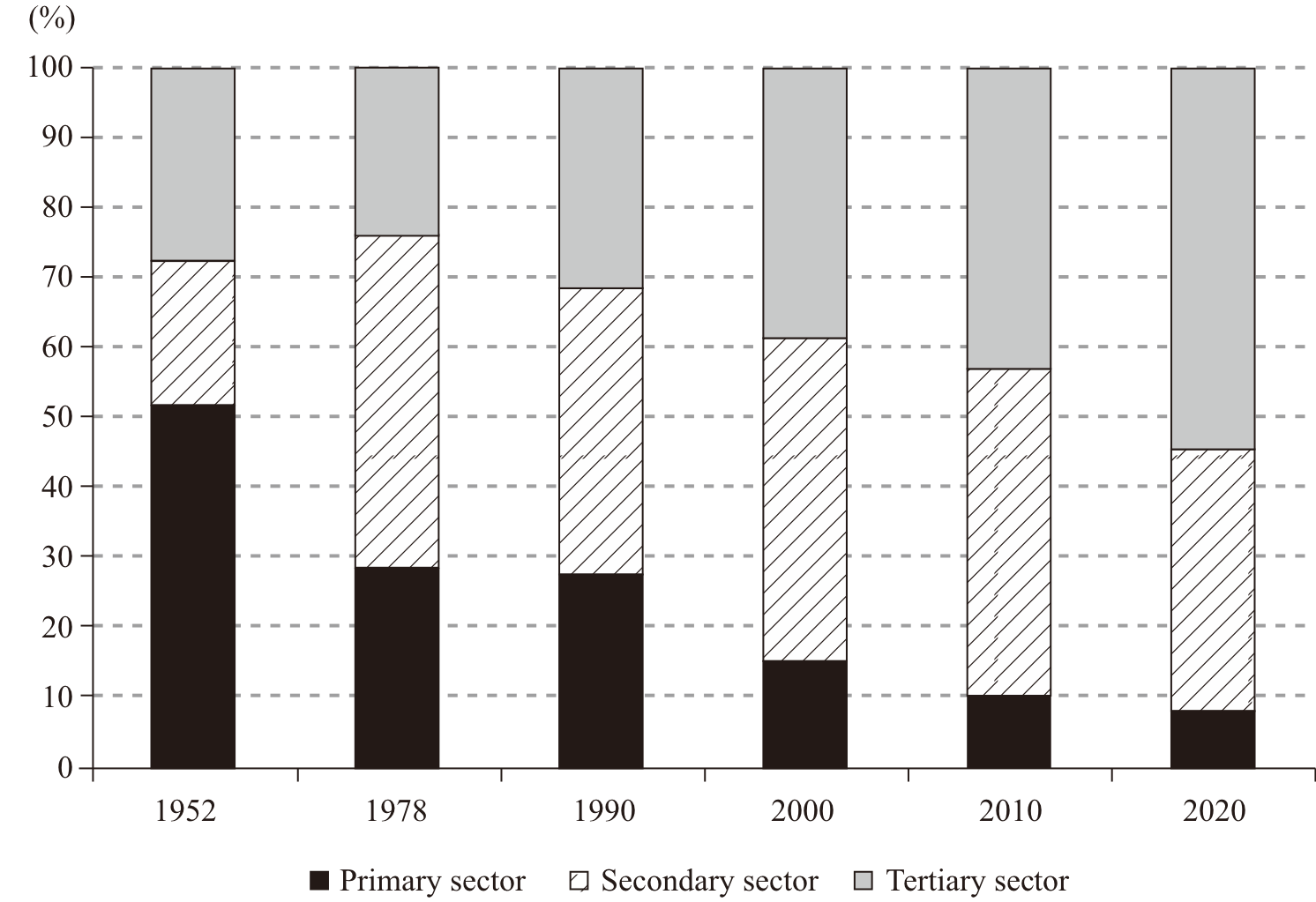
Chart 3 Shifts in China's economic structure (1952-2020)
Modern infrastructure networks have been improved. Thanks to efficient information networks and an extensive network of roads, railways and bridges, temporal distance inside China has been significantly shortened, and it has become much easier to travel across the country, even on difficult terrain (Panel 2).
Thanks to the constantly improving water resource management and infrastructure, China is able to support around 20 percent of the world's population and 17 percent of the global economy with only 6.6 percent of the planet's fresh water.
Panel 2 Achievements in Infrastructure
China's infrastructure network is among the largest in the world.
The country has built the most advanced railway and high-speed railway networks in the world. In 2020, it had 146,000 km of railway routes in operation, including 38,000 km of high-speed railways. China has the world's largest expressway network, with a total length of 161,000 km.
China now has 22,142 quay berths in service, including a world-leading 2,592 berths of 10,000 tonnes or above. It also has the world's longest navigable inland waterway system, reaching 127,700 km, and the highest inland waterway cargo transport volume. China has the world's highest liner shipping connectivity index, with eight of the world's top 10 ports based on cargo throughput, and seven based on container throughput. As a world leader in intelligent ports, China is renowned for the efficiency of its specialized terminals in major costal ports.
China has 241 civil airports nationwide.
The route length of China's urban rail transit with high and medium passenger capacities is close to 6,700 km. More cities in China are opening metro services than in any other country in the world. The total network length of postal and express delivery service (one way) reached 52.8 million km.
Internet penetration has risen fast. By June 2021, China had put 960,000 5G base stations into service, and 5G terminal connections had surpassed 365 million. Fixed broadband penetration reached 96 percent, mobile broadband use was 108 percent, and the number of internet users topped 1 billion.
2. Expanding People's Democracy
The people enjoy broad democratic rights. In China, all power of the state belongs to the people. The people engage in democratic elections, consultation, decision-making, management and oversight in accordance with the law (Panel 3).
Panel 3 Whole-Process People's Democracy
Among the deputies to the 13th National People's Congress (NPC), frontline workers and farmers account for 15.7 percent, and all 56 ethnic groups are represented; in the 13th National Committee of the Chinese People's Political Consultative Conference (CPPCC), non-CPC members account for 60.2 percent.
More and more women are participating in the decision-making and management of state affairs. There are 742 female deputies to the 13th NPC, accounting for 24.9 percent of the total; there are 441 female members in the 13th CPPCC National Committee, representing 20.4 percent of the total.
Since the 18th CPC National Congress in 2012, public opinion has been solicited on draft laws on 187 occasions, and more than 3 million comments from about 1.1 million people have been received, many of which have been adopted. During the drafting of the Civil Code, 10 rounds of public opinion solicitation were conducted, resulting in over 1 million comments from 425,000 people. During online solicitation for the preparation of the 14th Five-year Plan, over 1 million suggestions were received in two weeks. The NPC Standing Committee has established 10 local legislative outreach offices. By June 2021, these outreach offices had conveyed nearly 6,600 pieces of advice on 109 draft laws and legislative plans, many of which had been accepted.
The CPC Central Committee has organized or entrusted relevant departments to organize more than 170 consultative forums since 2012. On these occasions, it engaged in consultation with the other political parties and prominent individuals without party affiliation (non-affiliates) and solicited their opinions on matters of great importance such as the reports to the CPC national congress and plenary sessions of the CPC Central Committee and the formulation of the 14th Five-year Plan. The central committees of the eight non-CPC political parties and the non-affiliates have made more than 730 written proposals, many of which have turned into major state policies. From March 2018 - when the First Session of the 13th CPPCC National Committee was held - to June 2021, the CPPCC National Committee received 23,089 proposals.
The Chinese people enjoy extensive democratic rights. People's democracy has an institutional guarantee. Social equity and justice prevail. The fundamental strategy of governing the country by rule of law has been fully implemented. China has succeeded in coordinating law-based governance, exercise of state power, and government administration, and in integrating rule of law for the country, the government, and society.
3. Flourishing Cultural Sector
The ideological foundations of collective endeavor are growing stronger. Socialism with Chinese characteristics and the Chinese Dream are heartily embraced by the nation.
People are enjoying richer cultural activities (Panel 4). Public cultural facilities, ranging from rural reading rooms and cultural stations to urban libraries, museums, cultural centers, and art galleries, have been steadily improved, and are mostly open to the public free of charge or at a minimal cost. Public cultural services have become more diversified, equitable and convenient.
Panel 4 Progress in the Cultural and Tourism Sectors
Public cultural services are more accessible. At the end of 2020, China had 3,212 public libraries, 618 art galleries, 5,788 museums, 3,327 cultural centers, 32,825 township-level cultural stations, and more than 575,000 village-level cultural service centers. All public libraries, cultural centers/stations, and art galleries and more than 90 percent of museums are open to the public free of charge. Radio and TV covered 99.4 percent and 99.6 percent of the population. There were 3.7 million sports venues in China, with a total floor area of 3.1 billion sq m (2.2 sq m per capita). The rural fitness program covered almost all villages.
The cultural sector is experiencing strong growth. At the end of 2020, China had 60,000 enterprises of designated size1 in the cultural industry, whose revenues for the year approached RMB9.9 trillion. Of this figure, 32 percent came from new business forms. There were 19 national-level cultural industry demonstration parks across the country. The added value of the cultural and related industries reached RMB4.5 trillion in 2020, accounting for 4.4 percent of GDP.
The supply of tourism products has increased. By the end of June 2021, China had opened more than 13,000 scenic areas of Grade A to Grade 5A (including 306 rated as 5A), 45 national and 583 provincial vacation resorts, 300 revolution-themed tourism destinations, and 1,299 towns and villages oriented to rural tourism.
Traditional Chinese culture is preserved and carried forward. Creative evolution and development have injected new vitality, continuing China's cultural traditions, reinforcing its national spirit, and illuminating life in the new era.
The international appeal and influence of Chinese culture is growing. Traditional Chinese medicine, martial arts, Peking Opera, the tea ceremony and China-made films are now found in more countries. Chinese food, scenic sites, TV dramas, variety shows, online literature, and pop music are enjoyed globally. The 56 UNESCO world heritage sites in China are windows to understand the country's past and present.
4. Improving People's Wellbeing
People's lives have been notably improved. Personal incomes have grown steadily, with the average per capita disposable income up from RMB171 in 1978 to RMB32,189 in 2020 (Chart 4). Quality of life has improved, with the Engel coefficient of urban residents down from 57.5 percent in 1978 to 29.2 percent in 2020, and that of rural residents down from 67.7 percent to 32.7 percent (Chart 5).
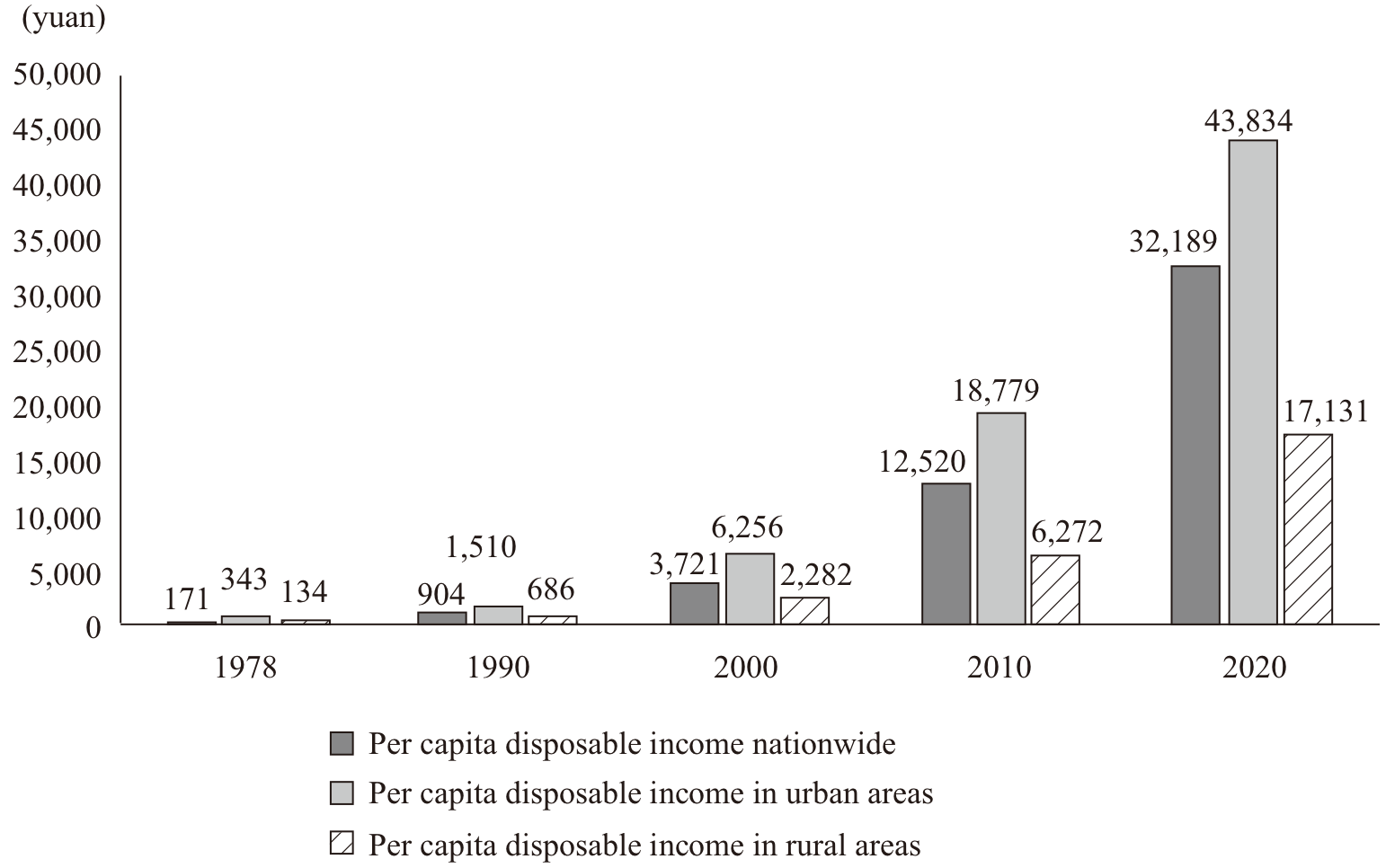
Chart 4 Growth in per capita disposable income (1978-2020)
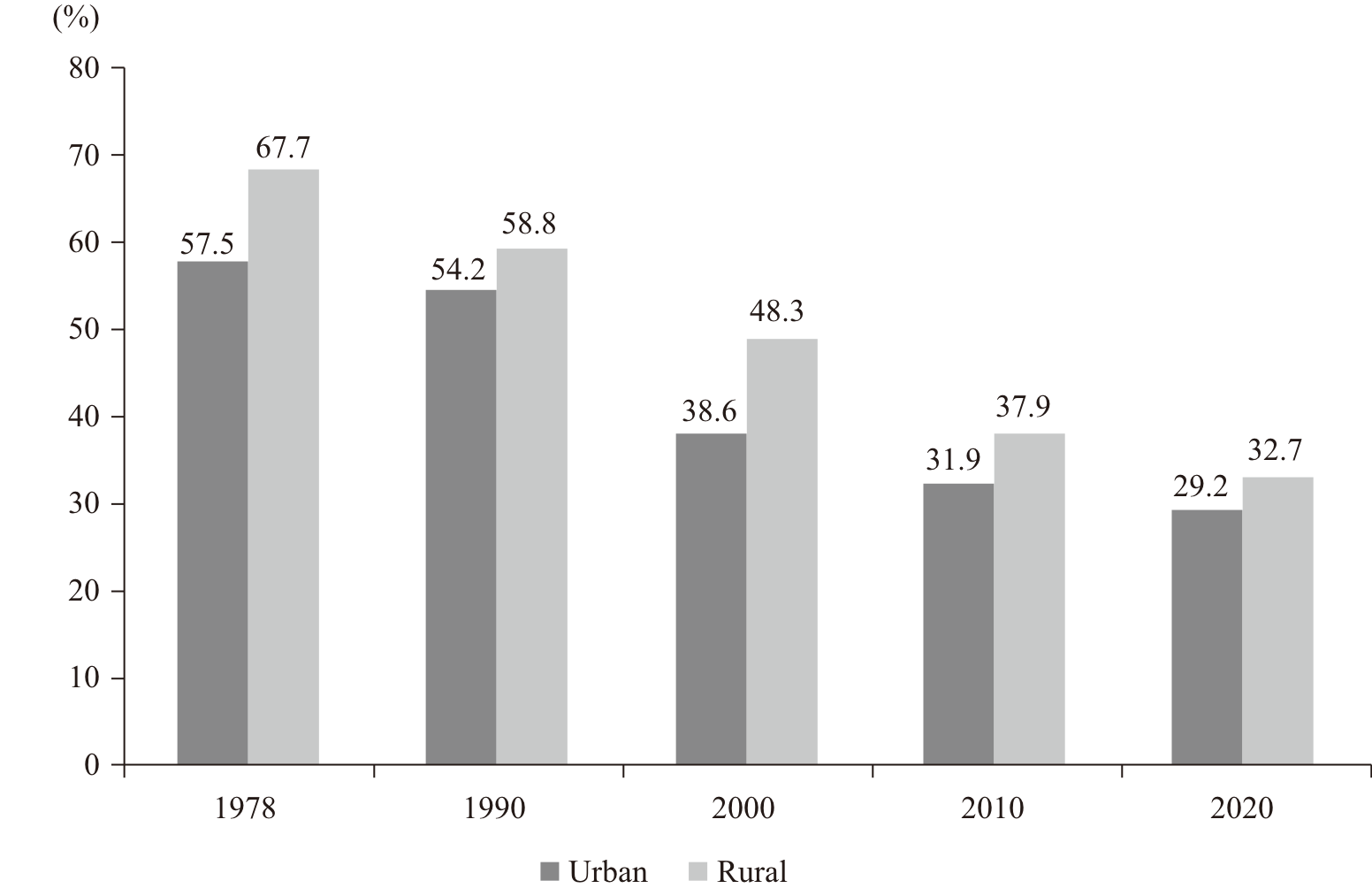
Chart 5 Engel coefficient of urban and rural residents (1978-2020)
The job market remains stable and the quality of employment is rising. China's employed population rose from 180 million in 1949 to 750 million in 2020. In the past, most working people were farmers. The employment structure has improved to the extent that 47.7 percent of the workforce are now employed in the tertiary sector (Chart 6), and 61.6 percent are working in cities (Chart 7). The working-age population, once mostly illiterate and semi-literate, now has an average of 10.8 years of schooling, and a higher-quality workforce is reflected in the fact that the number of skilled workers has reached about 200 million.
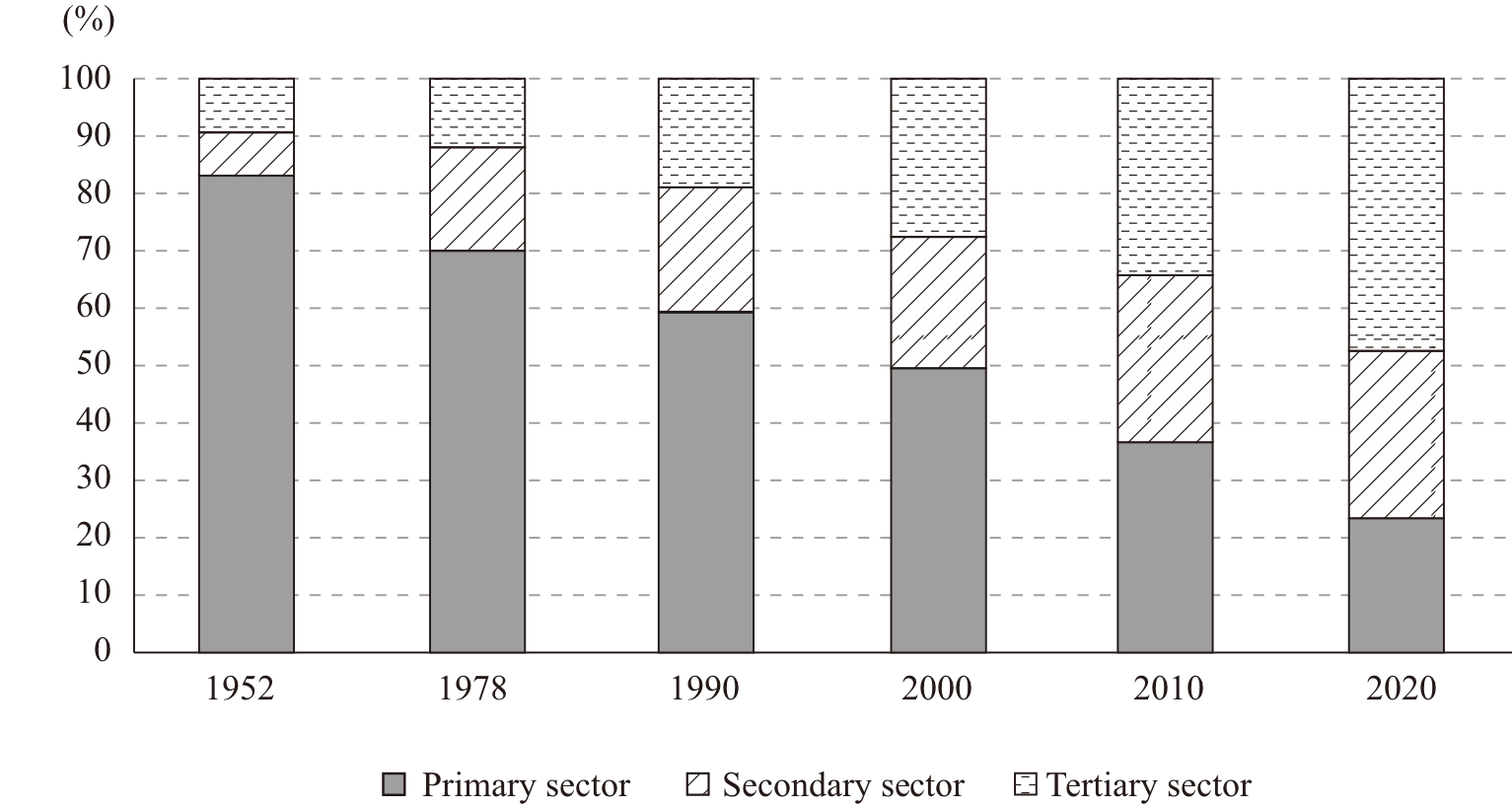
Chart 6 Changes in employment of primary, secondary and tertiary sectors (1952-2020)
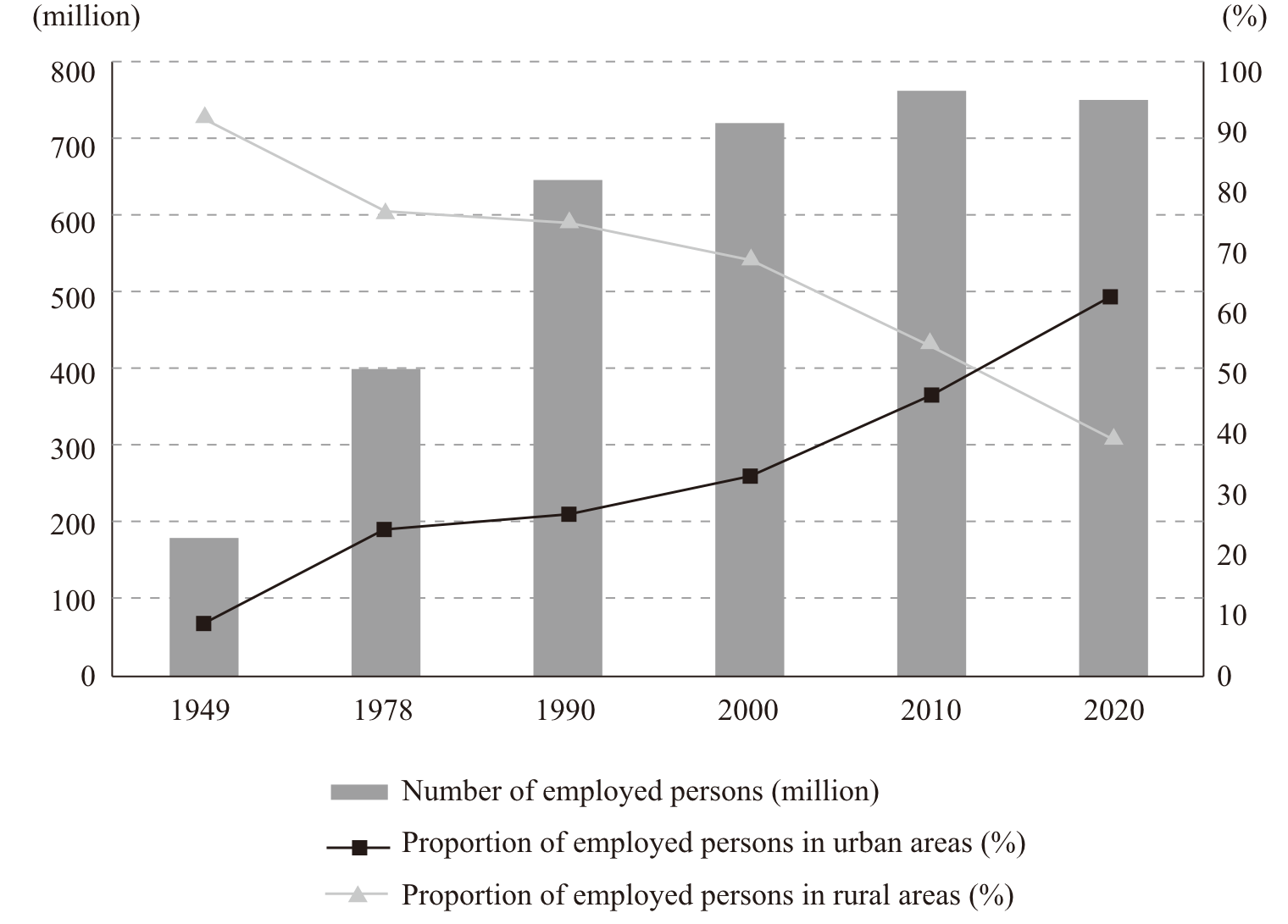
Chart 7 Changes in the urban and rural workforce from 1949 to 2020
Education is thriving. China has evolved from a populous country where a vast majority of people were illiterate or semi-illiterate, through one with significant education resources and a huge workforce, to one with high-quality education and human resources. It has established the world's largest education system that spans preschool, primary, secondary, and higher education, ranking in the upper-middle category worldwide in terms of modern education (Panel 5 and Table 1).
Social security covers all people. China has established the world's largest social security system, comprising social insurance, social assistance, social welfare, and support for entitled groups - components of an inclusive, multi-tiered, and sustainable system that guarantees basic living needs. By the end of June 2021, the number of people covered by basic old-age insurance was 1 billion; unemployment insurance, 222 million; work-related injury insurance, 274 million; basic medical insurance, more than 1.3 billion. The law provides that maternity insurance covers all employers and employees.
Panel 5 Achievements in Education
In 2020, China had 537,100 schools at all levels and of various types, with 289 million students and 17.9 million full-time teachers. The gross enrollment rate in preschool education reached 85.2 percent, and the completion rate of nine-year compulsory education 95.2 percent. The net enrollment rate in primary education was just under 100 percent, the gross enrollment rate in junior secondary education 102.5 percent, and compulsory education realized balanced development in 96.8 percent of the counties nationwide. The gross enrollment rate in senior secondary education reached 91.2 percent, and that in higher education 54.4 percent. All primary and secondary schools in China had access to the internet, and 98.4 percent already had multimedia classrooms.
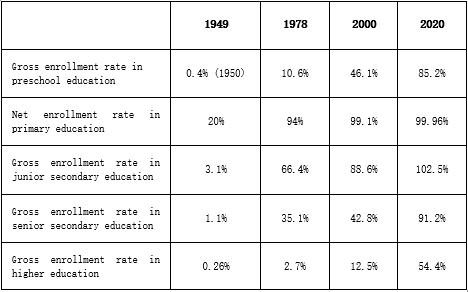
Table 1 Enrollment rate in education at different levels
The country has strengthened housing security by building more than 80 million units of government-subsidized housing and housing for people displaced by urban transformation. It has also improved the housing conditions of more than 200 million poor people.
Health care is ensured for all. China has shifted its medical insurance policy from local reimbursement only to trans-regional settlement, and extended its medical services from hospitals only to care provided by growing numbers of contracted family doctors. These represent components of a sound medical and health care system with better allocated medical resources, and help to address the problems of difficult and expensive access to medical treatment (Panel 6).
Panel 6 Achievements in Medical and Health Care Services
Based on its national conditions, China constantly refines its three-level medical service network covering urban and rural areas, with disease prevention remaining the priority. It has given better access to medical services to one fifth of the world's population. In 2020, the number of medical and health institutions in China exceeded 1 million, with 9.1 million beds and 10.7 million health professionals. A basic public health service system is in place, providing disease prevention and control, health education, maternal and child health care, and mental health care, among other professional services.
Equal access to basic public health services is supported by a per capita government subsidy that has increased from RMB15 in 2009 to RMB74 in 2020. Nineteen services including endemic disease prevention and treatment have been added to the 12 categories of basic public health services, provided to the public free of charge.
The average life expectancy in China rose from 67.8 years in 1981 to 77.3 years in 2019; infant mortality declined from 37.6 per 1,000 at the end of 1970s to 5.4 per 1,000 in 2020; and maternal mortality dropped from 43.2 per 100,000 in 2002 to 16.9 per 100,000 in 2020.
The public enjoy a greater sense of security. China has refined social governance within the framework of law by encouraging more public participation and applying the latest information technology to provide professional services. China's overall improvement in social management lifted the public's sense of security to an impressive 98.4 percent in 2020.
5. Historic Changes to the Eco-Environment
China has formulated and enforced stringent systems for eco-environmental protection. It applies the principles and methods of the rule of law into practice in promoting eco-environmental progress. By enacting the strictest Environmental Protection Law in its history, and formulating or amending a range of other laws and regulations, it has created a legal framework on the eco-environment that covers all environmental factors in major fields.
China has made strong headway in preventing and controlling pollution. In its drive to keep the skies blue, the waters clear, and the land pollution-free, China achieved the following in 2020:
♦ In cities at or above prefecture level, 87 percent days reached good or excellent air quality.
♦ In cities at or above prefecture level that fell short of the national standards, average PM2.5 concentrations decreased by 28.8 percent from 2015.
♦ The proportion of excellent and good-quality surface water reached 83.4 percent.
♦ Up to 94.5 percent of the drinking water sources serving urban communities reached the required standards.
♦ Black and foul water bodies in urban built-up areas at or above the prefecture level were largely eliminated.
♦ Approximately 90 percent of polluted farmland and more than 93 percent of polluted land plots were rendered safe for use.
♦ The target of bringing down the imports of foreign solid waste to zero was achieved as scheduled.
In 2020, 89.5 percent of Chinese people were satisfied with the eco-environment.
China has improved the health and stability of its ecosystems. Prioritizing resource conservation and environmental protection, and letting nature restore itself, the country has protected and managed its mountain, river, forest, farmland, lake, grassland, and desert ecosystems with a holistic approach. It has improved its management and inspection systems for nature reserves and eco-environmental protection zones, thereby strengthening eco-environmental security and ensuring China's sustainable development.
Through wide motivation and four decades of continuous effort, China has turned forestation and greening into a voluntary activity involving the whole of society. Extending its man-made forests to a total area of 79.3 million ha nationwide, China has transformed deserts into oases, and carpeted the Loess Plateau with greenery. The country has the highest growth in forest resources and the largest area of man-made forests in the world. By the end of 2020, it had raised its forest coverage to 23 percent of its land mass and the vegetation coverage of its grasslands to 56.1 percent, and brought over 50 percent of its wetland areas under protection.
The effort to build national forest cities continues to intensify, turning "forests in cities" into a reality. A total of 468 cities have been part of the greening movement, and vigorous steps to this end have raised the green space to 38.2 percent of urban built-up areas, and the per capita urban park green space to 14.8 sq m. All of this heralds a Beautiful China where the people take care of and live in harmony with nature.
China is embracing a green path to development and a green way of life. As the concept that lucid waters and lush mountains are invaluable assets gains more public support, the whole country has gradually shifted to a path of prioritizing eco-environmental conservation and pursuing green and low-carbon development. It is now moving faster towards an energy-conserving society, with a configuration of land use, an industrial structure, a production model, and a way of life that underpin resource conservation and environmental protection.
China tops the world in terms of new energy use and progress in energy conservation. Between 2015 and 2020, its energy consumption per unit of GDP fell by 13.2 percent and carbon emissions dropped by 18.8 percent. Through a range of initiatives including the "toilet revolution" in villages, domestic waste disposal and sewage treatment, domestic waste sorting, treatment of black and foul water bodies in cities, and construction of urban parks, green spaces, and greenways, people in both urban and rural settings now live in a cleaner, more comfortable, and more beautiful environment.
Urban public vehicles, mainly buses and subways, carry over 200 million passengers every day. Roads and facilities friendly to cycling and walking are expanding in urban areas, and more people are favoring green and low-carbon modes of transport. In addition, tens of thousands of households are practicing thrift through actions such as saving food, water, paper, and energy, choosing eco-friendly materials for home decoration, and saying no to over-packaging and disposable products. The nation is turning towards a thrifty, green, low-carbon, and healthy lifestyle.
1.Chapter II of "China's Epic Journey from Poverty to Prosperity", data source: The State Council Information Office of the People's Republic of China, Full Text: China's Epic Journey from Poverty to Prosperity (scio.gov.cn)
Source: <www.scio.gov.cn/zfbps/32832/Document/1713893/1713893.htm>
Edited by Bao Lianying